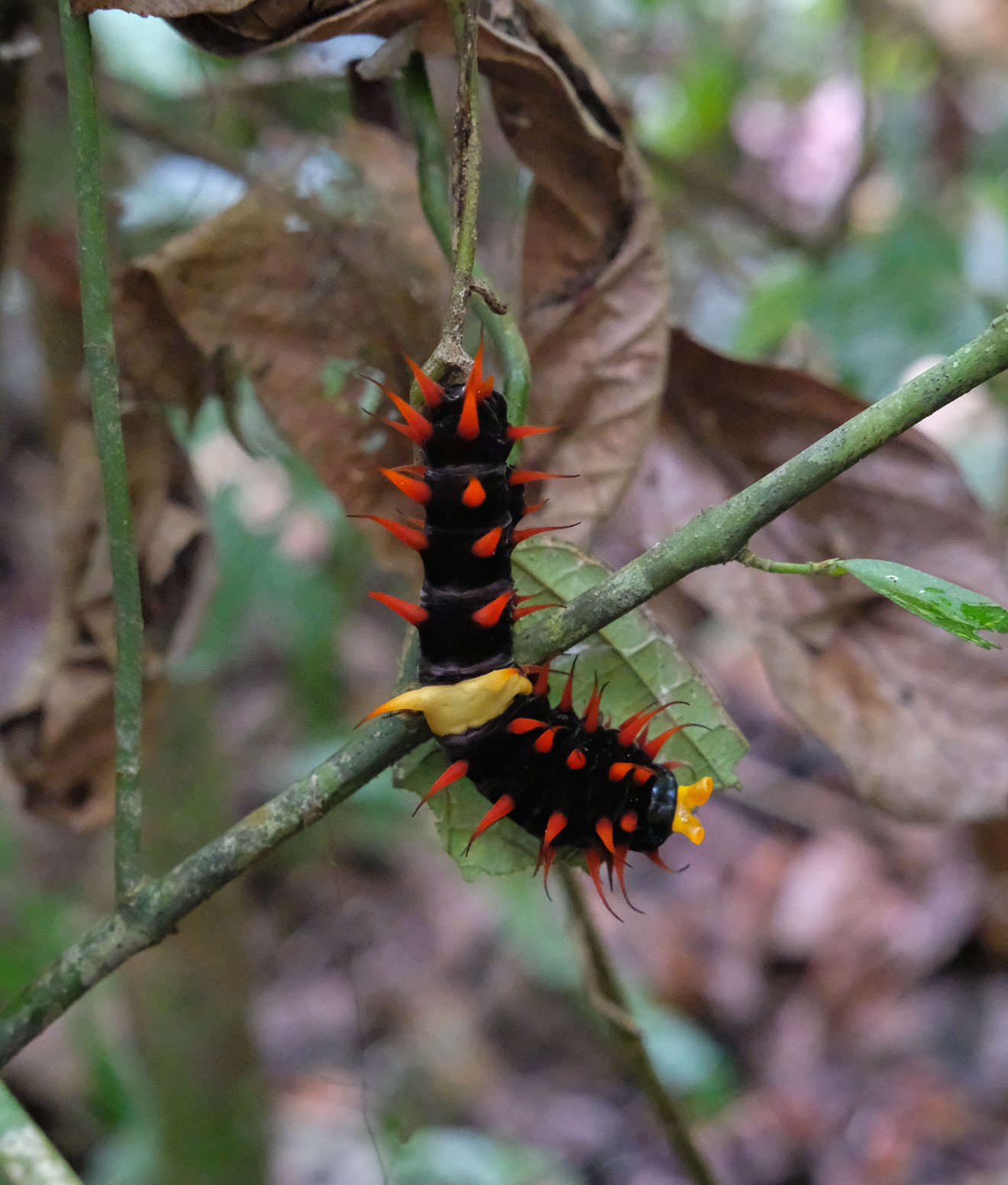On 19-21 September SBBT Patron Henry Barlow and entomologist Charles Harbottle visited the 700m Managalas Plateau in Northern Province, PNG, to assess the populations of Queen Alexandra’s Birdwing there. The visit was facilitated by local NGO partners the Managalas Conservation Foundation and Partners with Melanesians, whose Facebook page has many excellent photographs!
Getting to the Plateau involved a 3-hour drive on a dirt road, accompanied by staff from Higaturu Estate, where it is planned to build the new butterfly breeding facility. On arrival, they waded through two rivers, and hiked for 40 minutes through overgrown vegetable gardens to a site on the forest edge. Here they found a small ranching enterprise, undertaken by a local family that helps to conserve the species by collecting caterpillars in their last, 6th instar, and placing them in a protected environment where they pupate for eight weeks, emerge, and harden their wings before being released back into the forest. It is estimated 100-200 are released annually, making a significant contribution to the wild population.
The poor access road comes with no power, water services and minimal health and education facilities; so the 22,000 people who live on the Plateau may have the world’s most spectacular butterfly on their doorstep, but their day-to-day focus is more on farming, and feeding and educating the family. How can the Birdwing help to meet local people’s needs and at the same time retain enough habitat for a sustainable breeding population? This is the challenge the Swallowtail and Birdwing Butterfly Trust aims to tackle in partnership with local organisations.
Watch this space!




